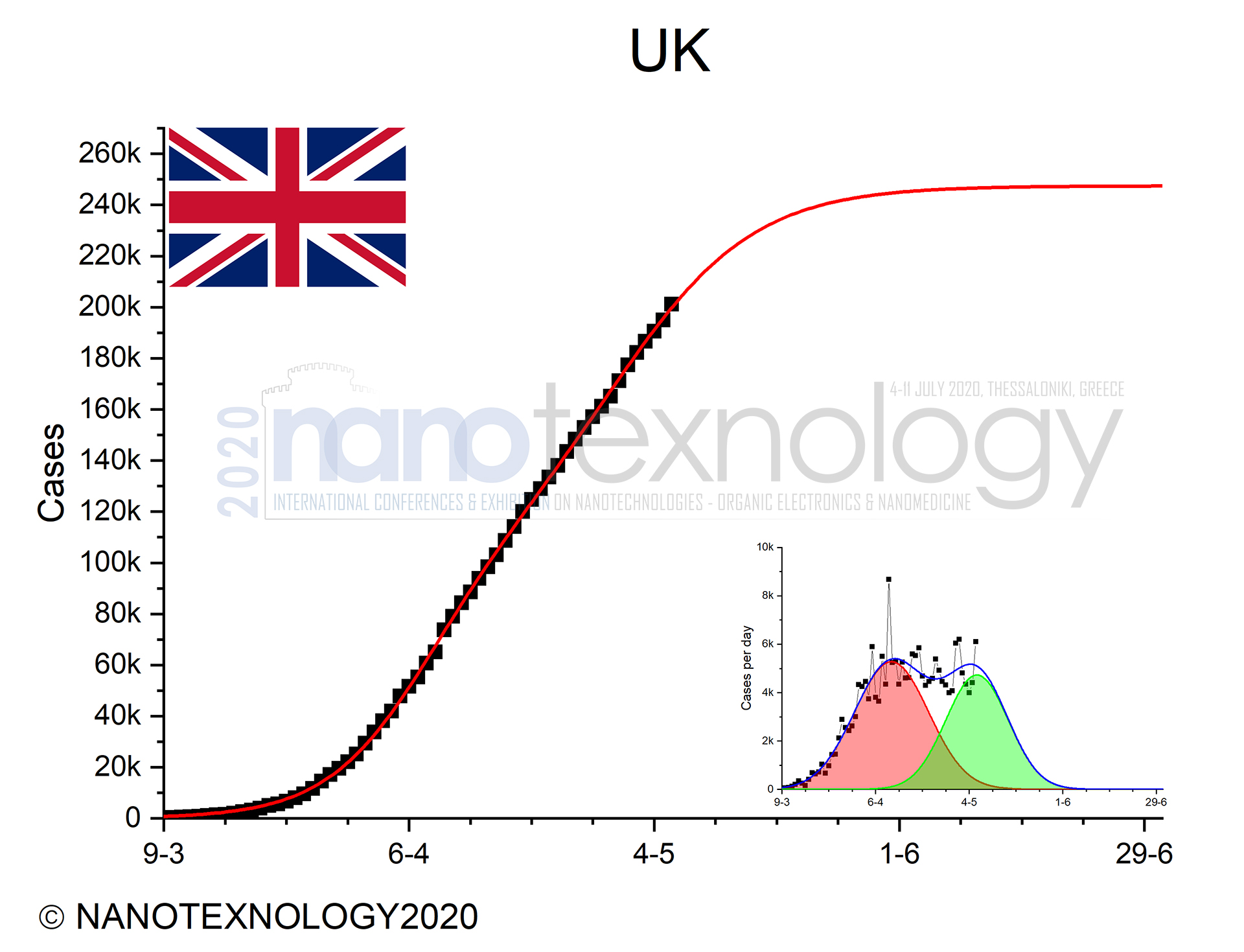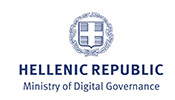
Studies on COVID-19 pandemic status Worldwide
Within these difficult and challenging circumstances brought by the COVID-19 pandemic, everyone of us are mainly concerned on how to keep ourselves and our families safe and healthy. Besides, we are also thinking on how to contribute as scientists and responsible citizens, and how we can help our people and our society.
Since the outbreak of this pandemic, the NANOTEXNOLOGY Organizing Committee and the Nanotechnology Lab LTFN at AUTh, are constantly monitoring and study the situation worldwide. We follow daily the published reports and statistics, together with the measures implemented by the governments to limit the spread of the COVID-19 and to protect our health. On the other side we follow the governments response and views on how to reduce the social-economic consequences.
As we already described in our first communication a week ago, based on studies and estimations regarding the situation on the confirmed cases, we present the current data (updated daily) and predictions until end of June. The latter, being based on well documented S-curve and Gaussian modeling procedures on cumulative and daily data responsibly, confirmed cases data for many countries and geographical regions such as Europe, USA, Asia and Worldwide, Germany, Italy, Spain, France, Greece, S. Korea and so on.
According to these continuously updated predictions, with the provided data to-date, the number of new cases has shown significant reduction. For example, Europe, in which it was expected to reach rather low number of incidents in the first week of May, reaching a minimum of new cases in the middle of May. This observation resulted from the analysis of the total cases for each country with the S-curve and Gaussian models. Figures below are shown the S-curves fitted results (solid red lines), while in the insets are the corresponding derivatives, describing the evolution of total cases and the cases-per-day, respectively.
In this second communication, we include additionally some studies on countries of interest or some group of countries which either passed the first phase of COVID-19 spreads and now are in the second phase such as China and S. Korea, or some group of countries with considerable interest since they exhibit an enormous COVID-19 spread again, such as Japan, Taiwan and Singapore. Finally, we present the case of European countries that where suffered mostly and now are closer to the second phase, and their governments are looking for reducing measures. In any case, we think that our analysis and predictions could help to this direction in order to apply specific plans and approaches.
A. Cases of China and South Korea
China and South Korea have reached the confirmed cases plateau end of February and on 16th of March, respectively. However, these countries either have already reduced the measures (China) or they have an external number of cases from international arrivals (S. Korea) and as a result, the last four weeks they exhibit a second phase increase of new cases as it is showed in Fig. 1.
China was the first country reported confirmed case in December 2019 in Wuhan. First measures in China took place in the beginning of 2020 starting from the closing of the seafood market. Also, misinformation about the confirmed cases, as well as, the change in the testing on 12th of February changed significantly the total confirmed cases curve. On 8th April the life in Wuhan started again. Interestingly, however, no actual increase in confirmed cases were observed during that period and until today, expect the yesterday announcement for additional 1290 deaths!
On the other hand, the case of South Korea is remarkable, due to the shape of S-curve, indicating that after the first phase of COVID-19 spread, a second one took place. The graph in Fig. 1 shows the two phases:
- In the first phase, starting on 20th January, only few cases reported and from 18-29/2 where patient #31 continued to participate in gatherings of Shincheonji, days after showing symptoms, which are typically held by people in very close proximity and include physical contact between the members, end on 16th March as already discussed. During this period, the country blocked arrivals from China.
- After 16th March started the first steps for reduction of the measures, and the permission of the international flights. Thus, the stop blocking last month arrival from Europe and USA, and the second phase effect cases appeared, pushed government to keep most of the measures until next week.
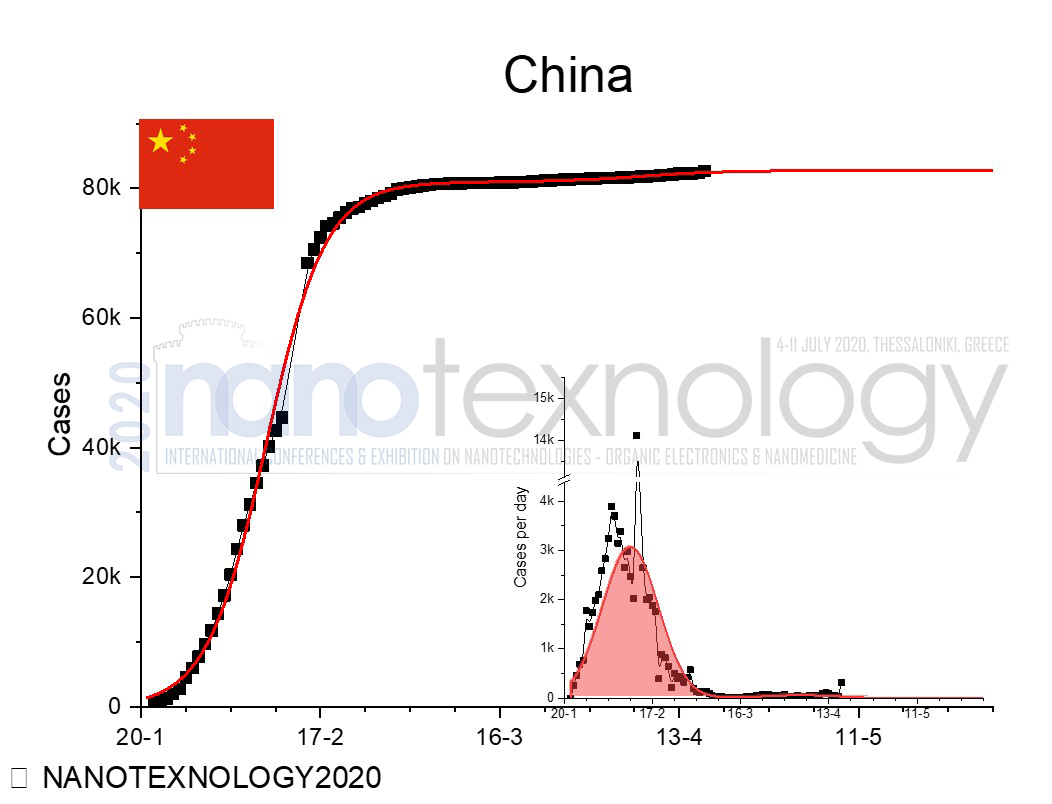 |
|
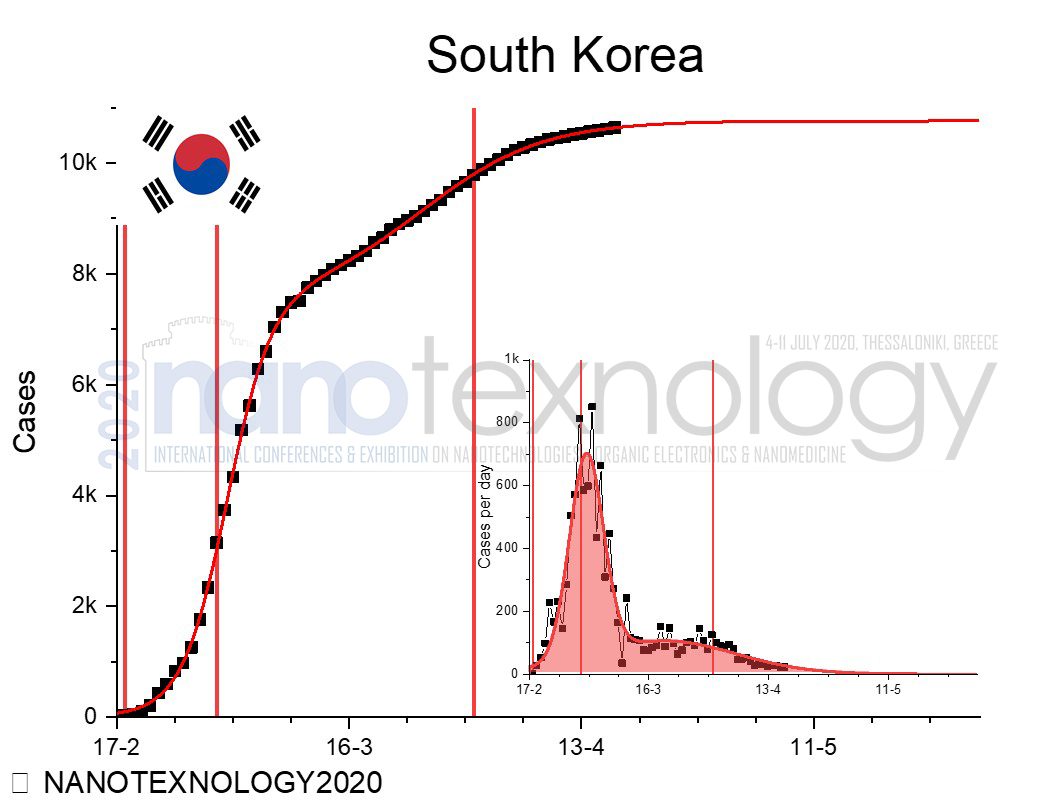 |
Figure 1: China and South Korea COVID-19 Case Studies |
B. Catholic Easter period between 6 and 15 April
Except, from Austria, the other three central European countries, discussed below, reported higher number of confirmed cases. All European countries are expected to reach the first phase plateau in the beginning of May, as predicted by the S-curves in Fig. 2. However, due to the measures taken most of them are exhibiting value of confirmed cases over the 90% of predicted plateau.
In the case of Mediterranean Countries, Italy and Spain, Germany and Austria, and Brazil from South America, the COVID-19 spread during the Catholic Easter period was enormous. Of course, during Catholic Easter (grey areas in Fig. 2 graphs), the number of cases per day showed deviations from the expected bell-shaped line indicating that people are holding holiday gatherings, even though a lockdown for all counties was issued.
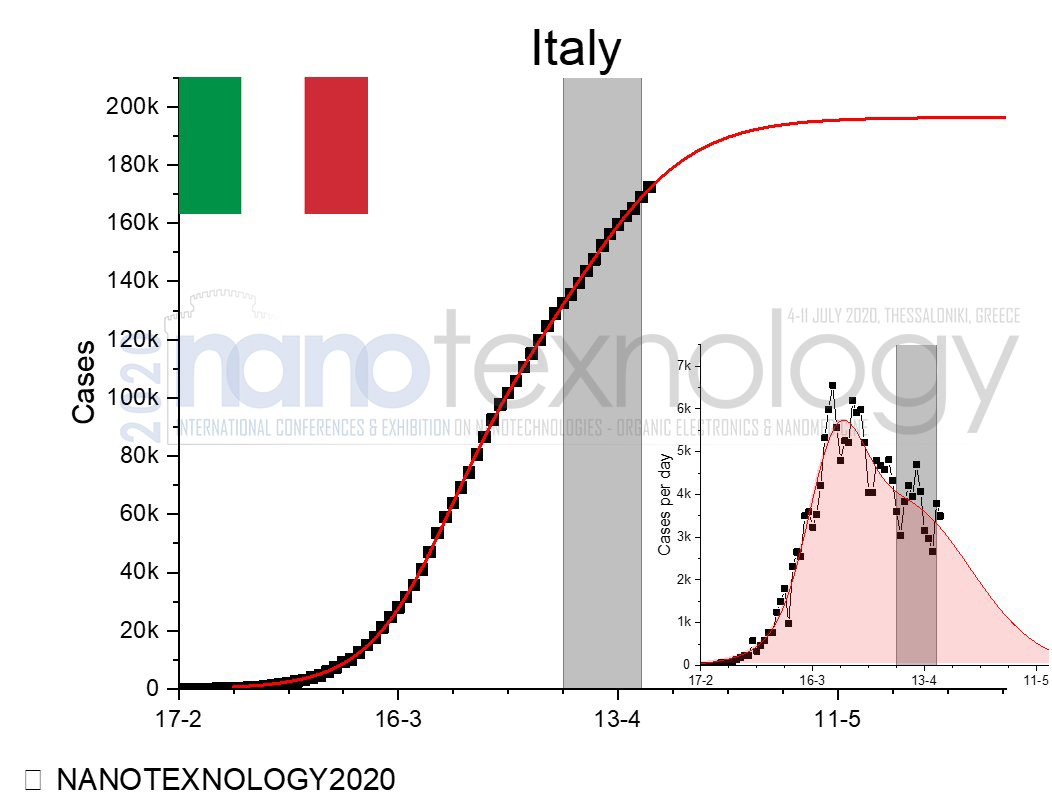 |
|
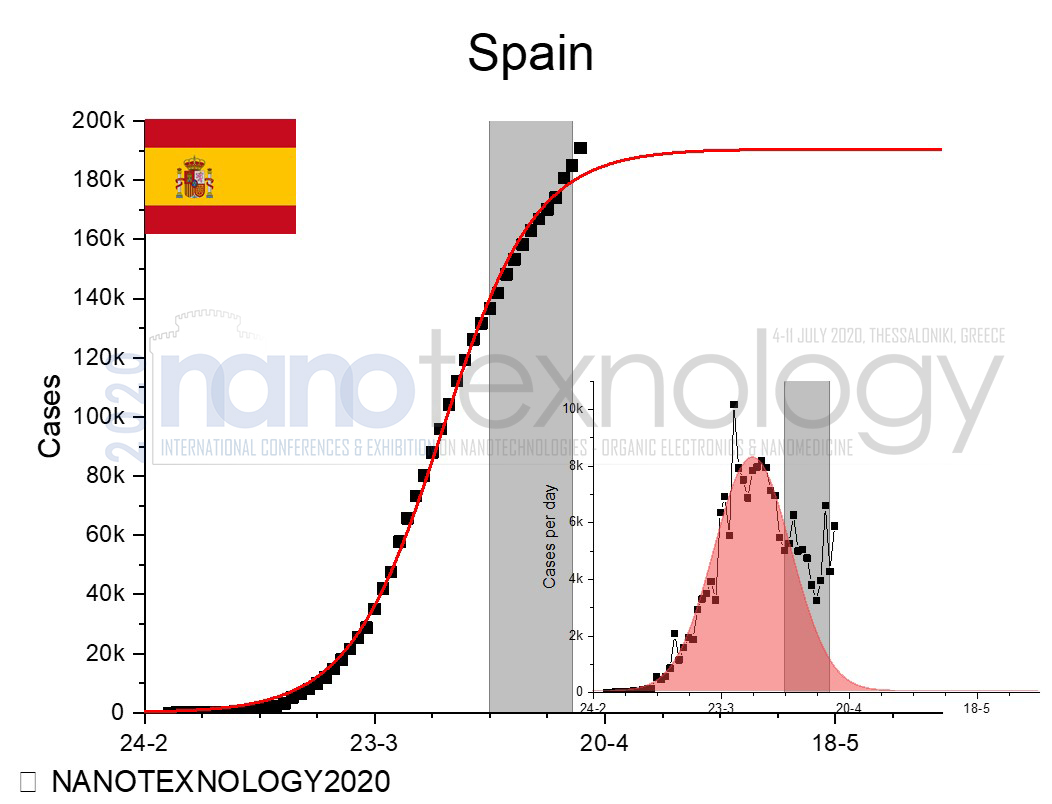 |
| |
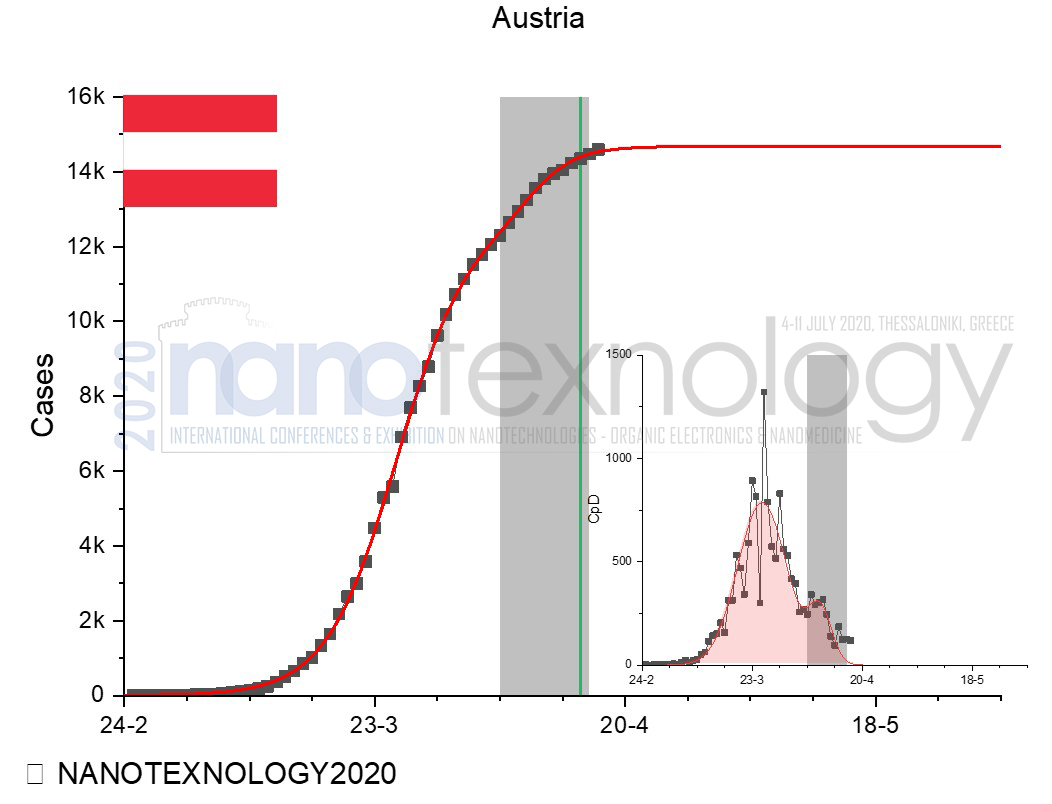 |
|
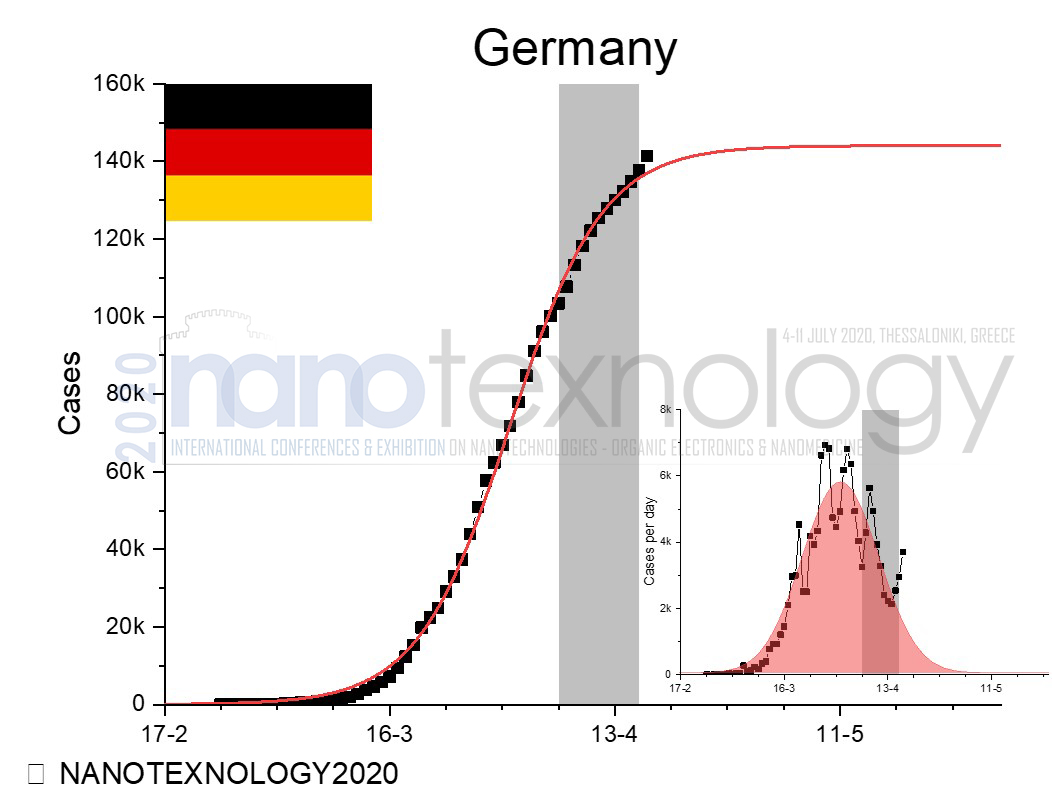 |
| |
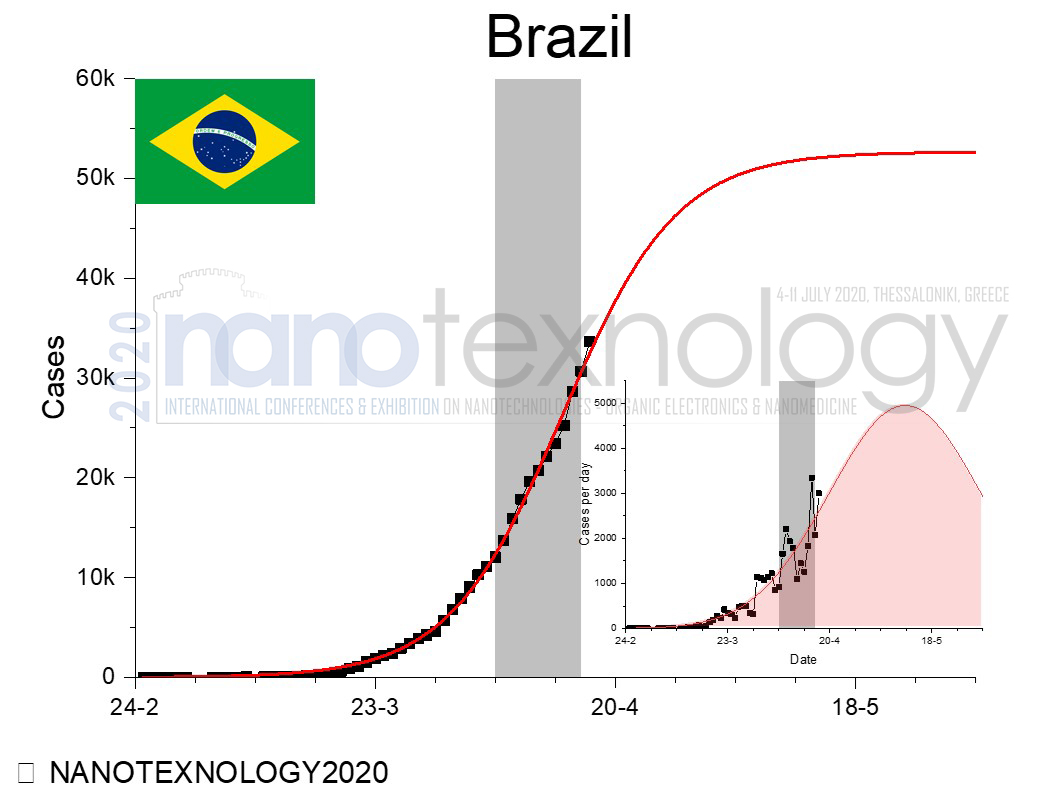 |
|
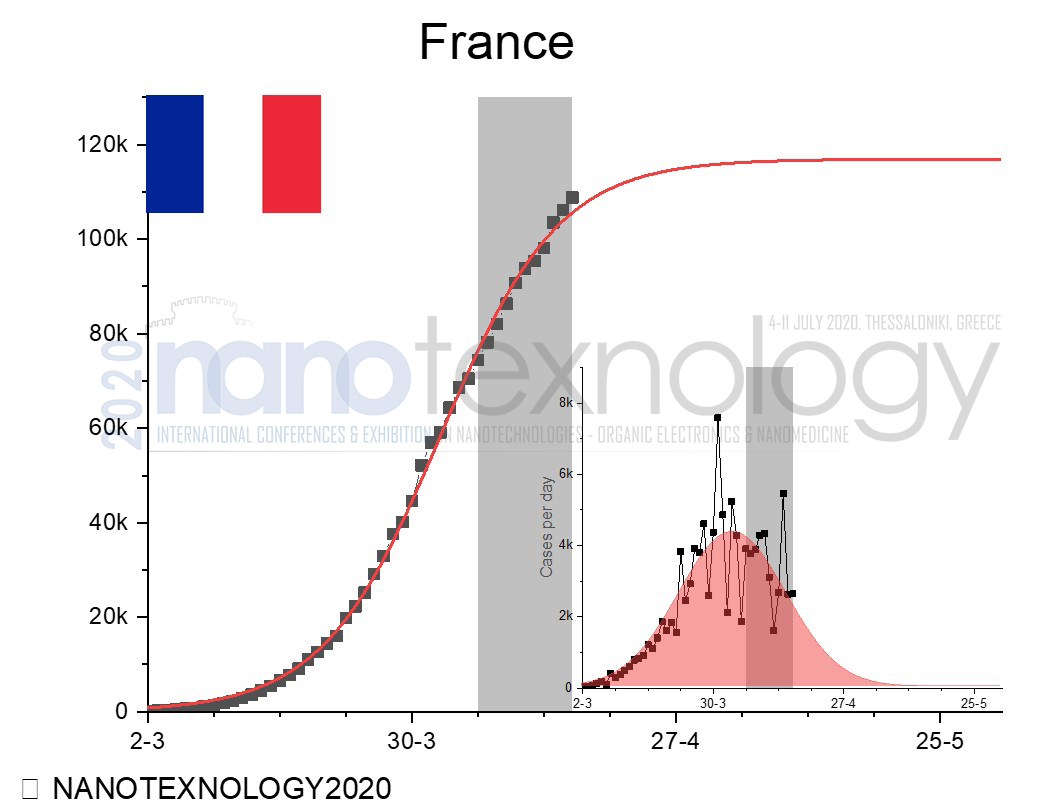 |
Figure 2: Study of COVID-19 cases during Catholic Easter |
C. The case of Greece
On 26th of February, the 1st confirmed case was reported and until today 2235 cases have been reported. The Ministry of Health, took all the necessary measures to delay the COVID-19 spread starting from the Isolation of prefectures in the beginning of March, closing schools and universities on 11th of March and Complete lockdown on 23rd of March.
However, the Orthodox Easter period (13 to 22 April), the gray area in Fig. 3, is a critical period to test and to compare COVID-19 spread with the one of the Italy and Spain observed during the Catholic Easter a week earlier. In case that people and families will increase their visits and interactions during the Easter period, there is a possibility for a delay in the reduction of cases, similar to one observed in Italy and Spain.
Finally, on 3th May (green vertical line in Fig. 3) it is reported that the Greek government prepares to start reducing step by step some measures. We assume that a conservative plan with a maximum of cases below 7, will be a good plan for this second phase. This is simulated by the green Gaussian line and description shown in the inset of Fig. 3. Based on that it is expected that by the first week of June the confirmed cases plateau will be reached. Thus, we expect the total cases plateau will reach higher values as it is shown with the blue line in Fig. 3.
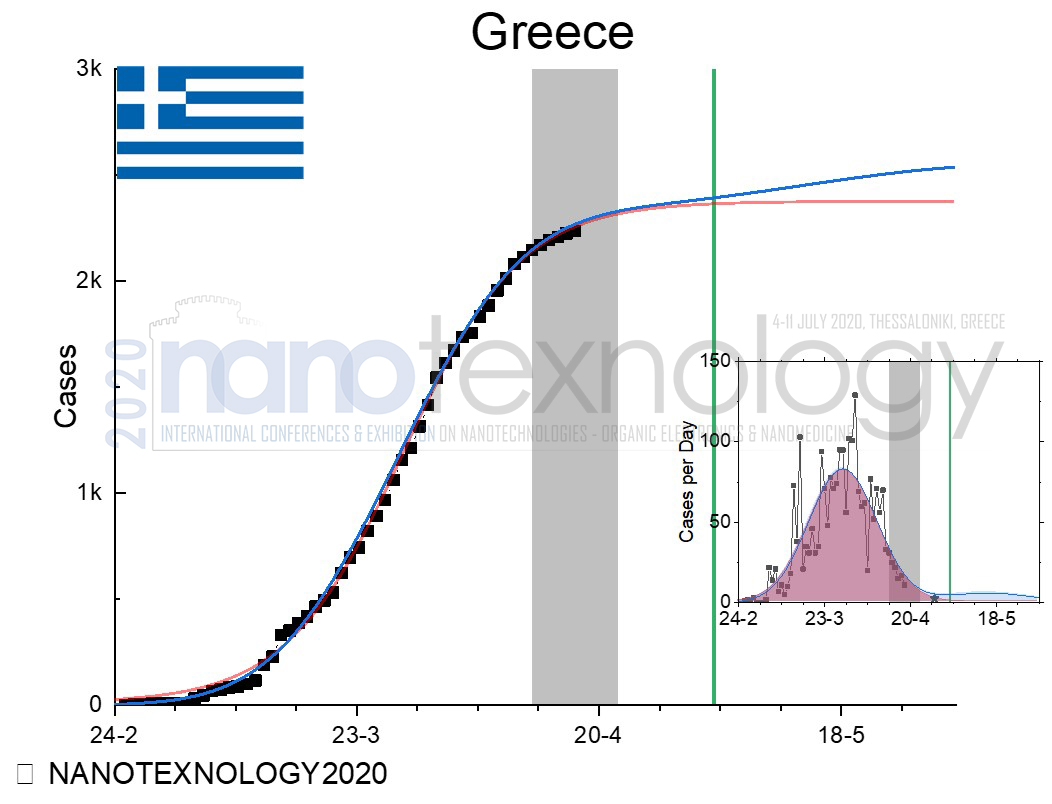 |
Figure 3: Study of COVID-19 spread in Greece |
D. Japan, Singapore and Taiwan cases
Countries in Asia such as Japan, Singapore and Taiwan was thoughted until recently, that they have been passed the COVID-19 spread with very low cases. Surprisingly, last two weeks all of them exhibited an enormous COVID-19 spread again (see Fig. 4). For this reason, we focus and decide to study their case more carefully as can be seen in Fig. 4.
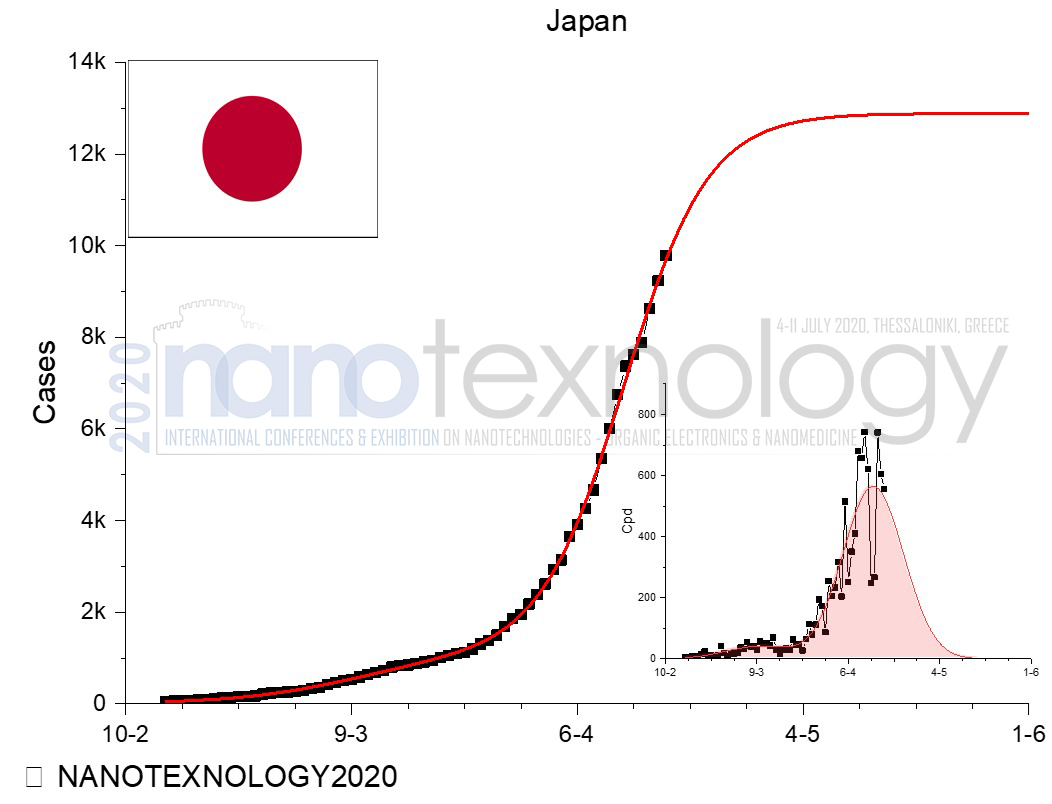 |
|
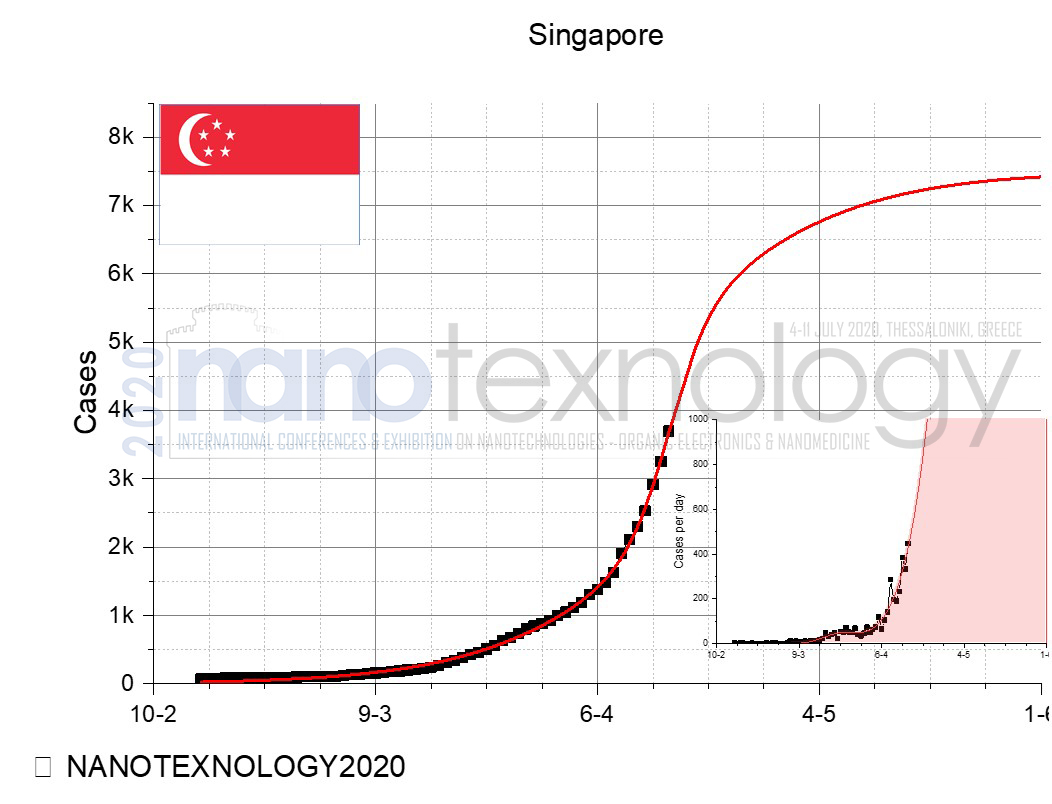 |
| |
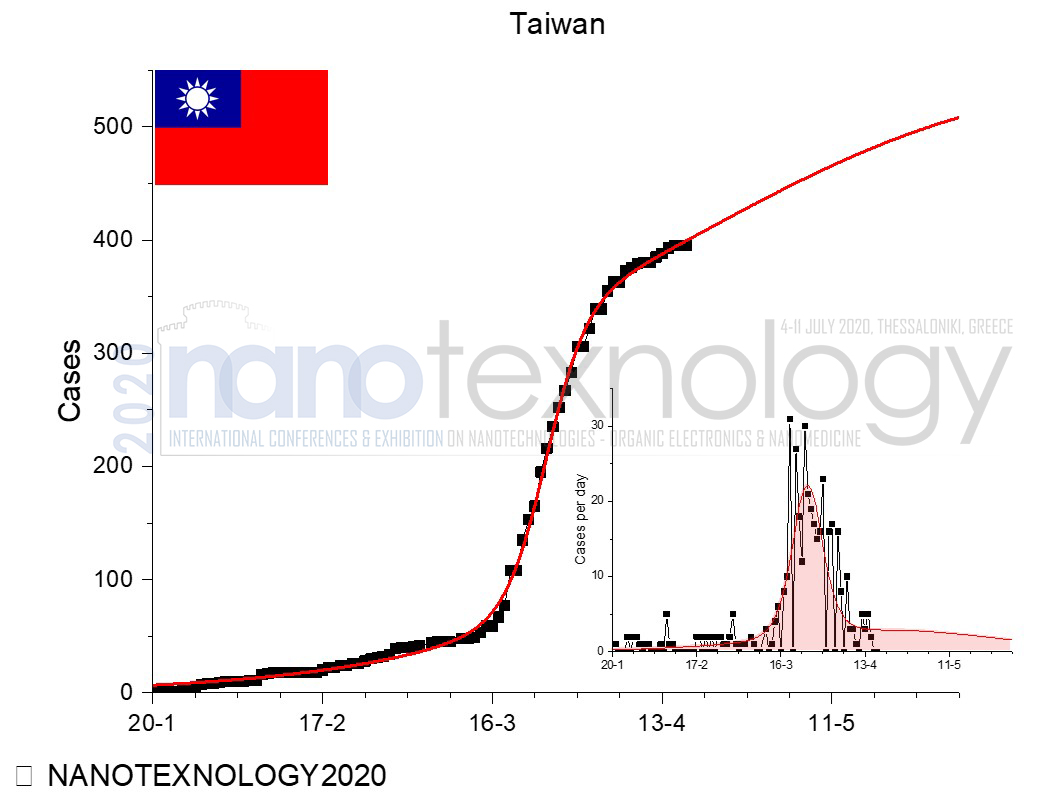 |
|
|
Figure 4: Total and daily confirmed cases from Japan, Singapore and Taiwan |
E. Sweden and Denmark
Sweden and Denmark is another case to study. These two countries, showed a sharp peak in the very beginning of COVID-19 spread following by a normal S-curve evolution afterwards (see Fig. 5). Especially Sweden have not taken measures as for example, happened with the most European countries. On the other hand, Denmark ended lockdown very early (according to Fig. 5) on 13th of April, and will be a good case study next period.
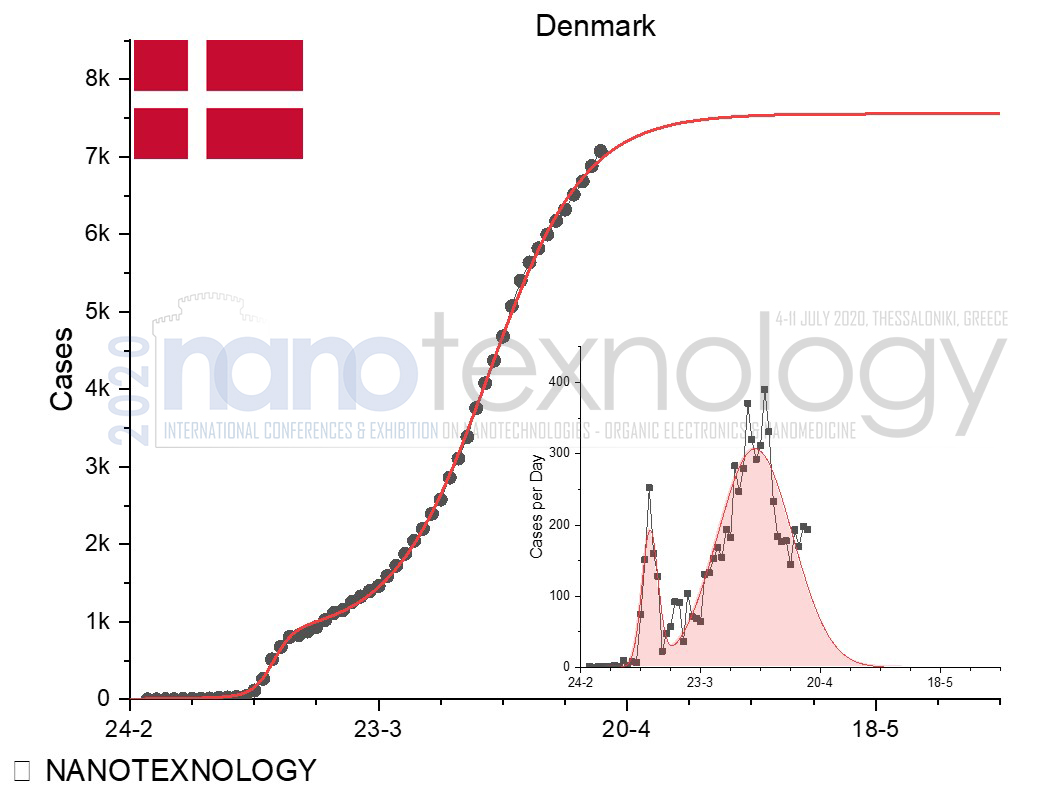 |
|
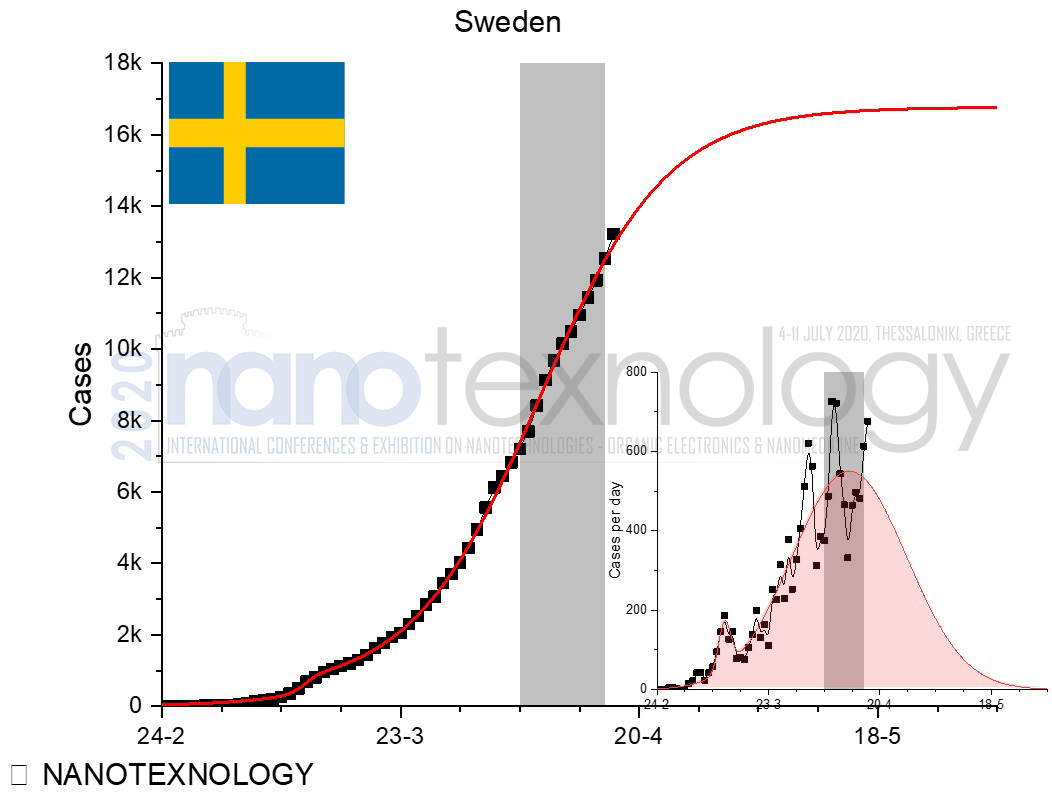 |
Figure 5: Total and daily confirmed cases from Denmark and Sweden |
F. Worldwide, USA and Europe
Due to different reporting dates of the first case for each country we separated our study in different continents and countries as depicted in Fig. 6. Today (18th of April 2020), the confirmed cases for Europe and for USA correspond to the 45% and 32% of World confirmed cases (excluding China, as China has reached the first phase plateau), respectively. The grey and the yellow area are the Catholic and Orthodox Easter (2 weeks period), respectively. Utilizing the S-curve formulation it is predicted that by the beginning of June the confirmed cases for Europe and USA are expected to fall to the 40.5% and 30% of the World’s confirmed cases.
a) 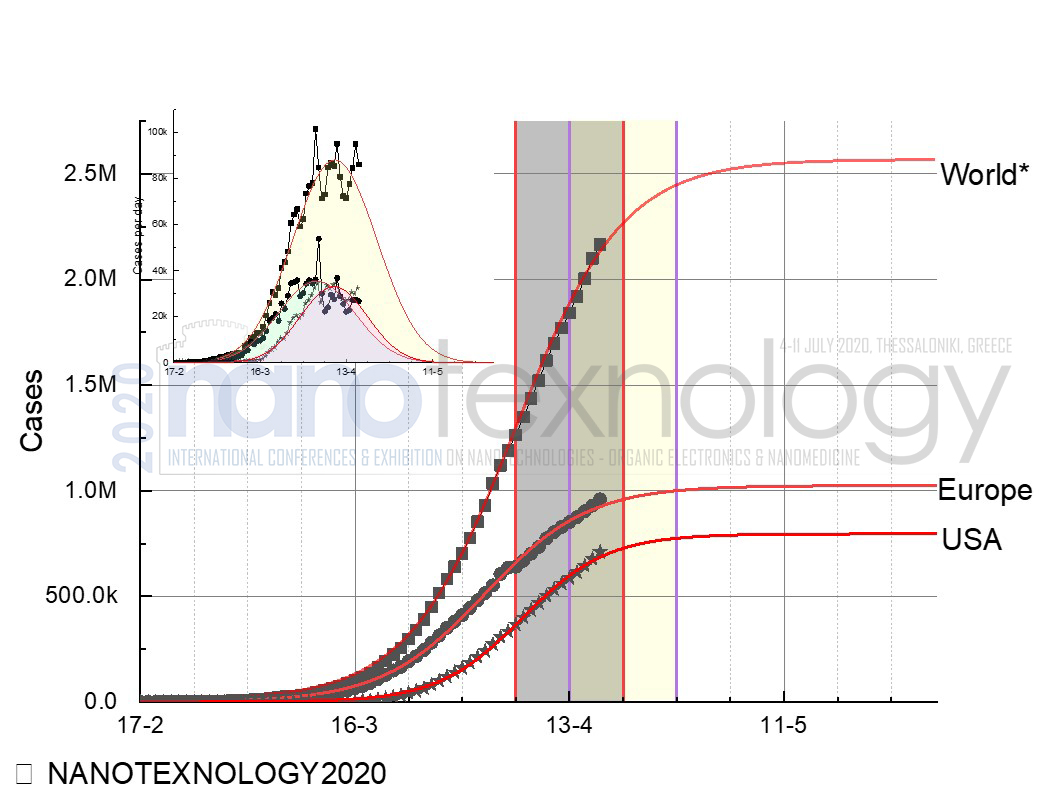 |
| |
b) 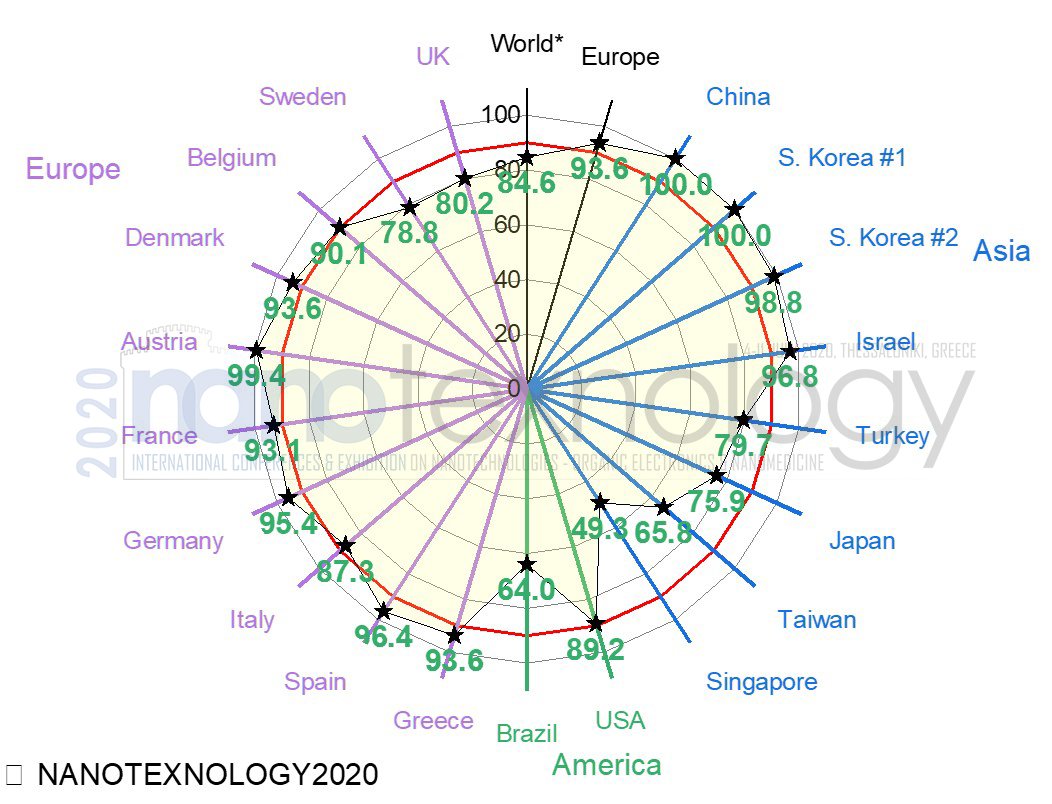 |
Figure 6: a) Total and Daily Confirmed Cases (inset) for World (ex China) and Europe and b) the radar graph for the Confirmed Cases value percentage against plateau (the red line corresponds to the 90% of Plateau value) |
Finally, based on our studies we point out that any measure for lifting parts of the lockdown, or external cases not taken into account in the country plans will have a profound effect on the appearance of new infection cases, since this virus shows a tremendous spread potential. Therefore, any plans for a partial lift of the lockdown or measures have been taken has to be performed with extreme care and consideration, and in accordance with a specific plan, and based on a trial and error approach.
We would like to have your feedback and opinion on these studies and predictions that will help all of us to deal with this unprecedented situation with professionalism, and to help our colleagues, collaborators, family and friends, and fellow citizens, both in the next door and across the globe.
Copyright © NANOTEXNOLOGY. All rights reserved.






























